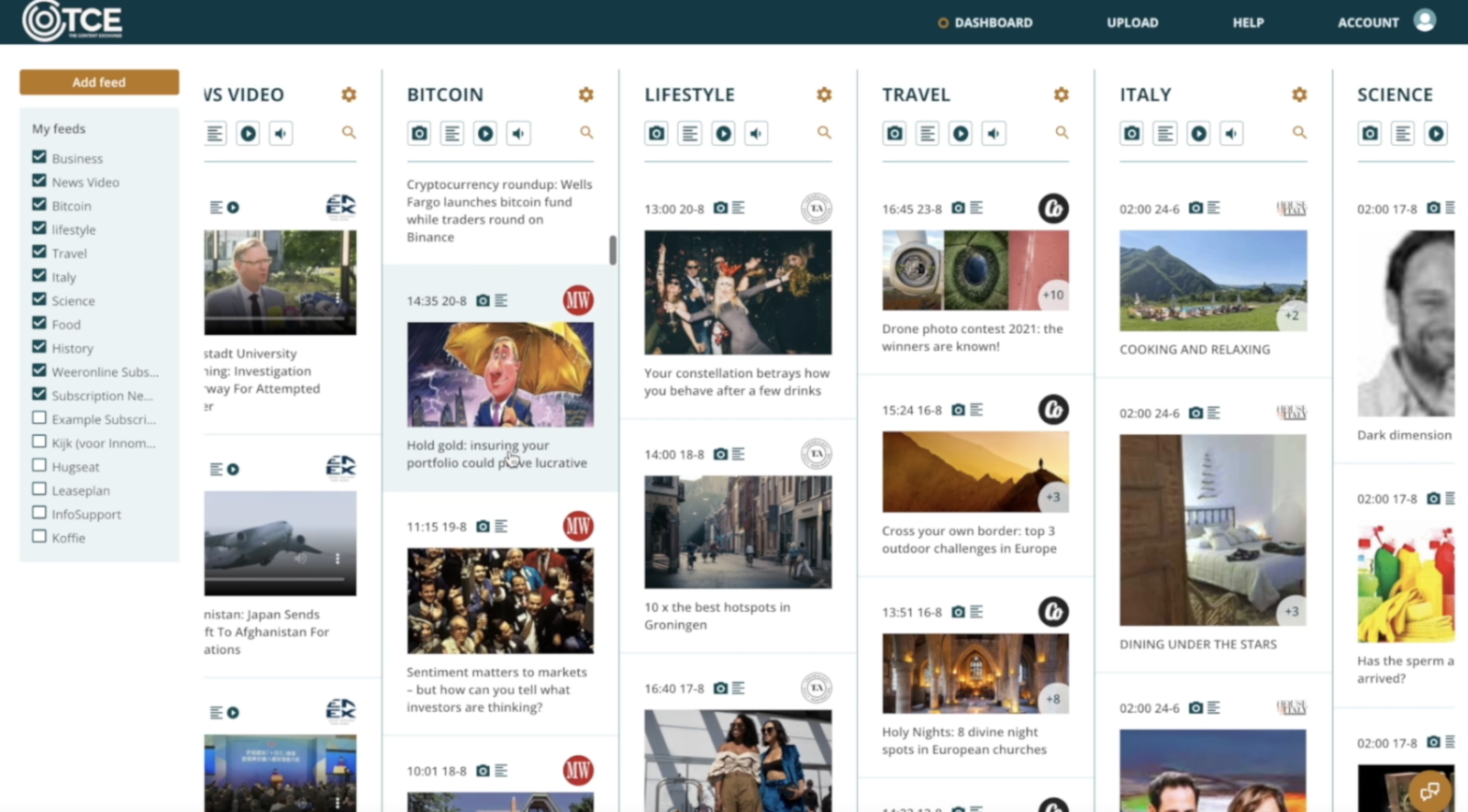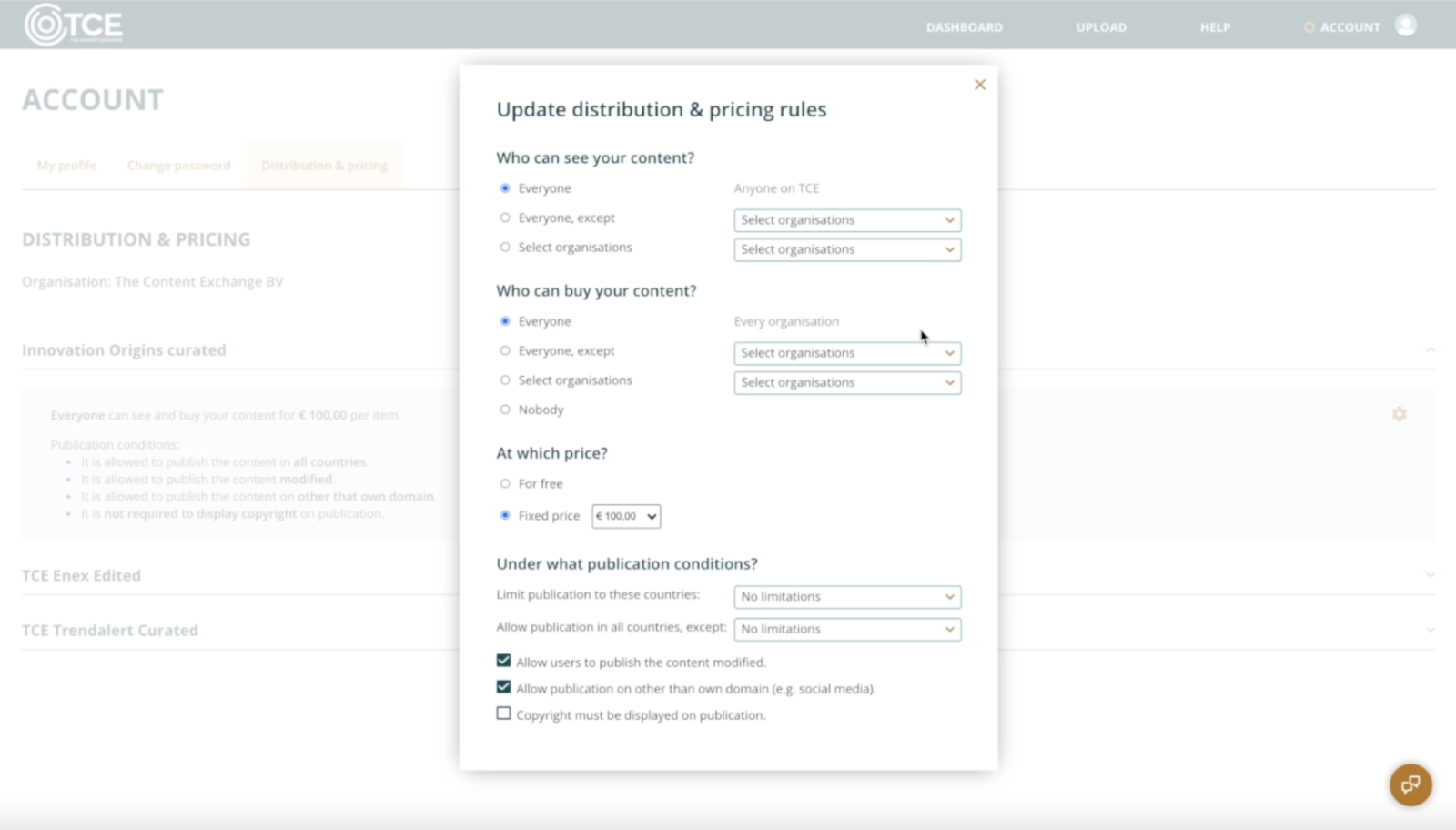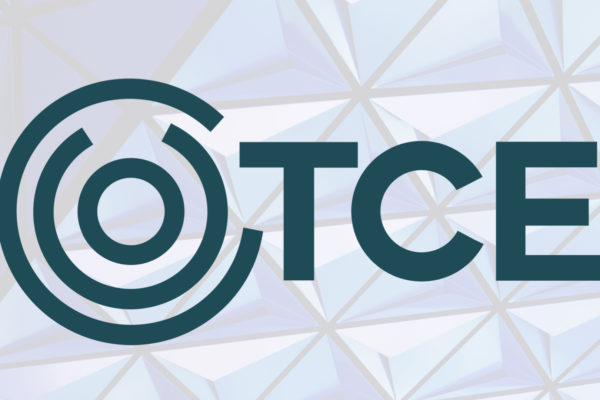The Content Exchange on bringing creators and buyers together at scale
Founded in 2020, The Content Exchange (TCE) is a digital marketplace where publishers and creators can offer or license quality content directly from one another. Translating everything automatically into English, the platform facilitates licensing deals at scale, and provides a place where content can find greater reach. Here, in this exclusive interview for FIPP, co-Founder and Managing Director, Joris van Lierop talks us through the platform and what it brings to the traditional licensing industry.
“I’ve been active in publishing all of my professional career more or less,” van Lierop tells us. “Mostly for the bigger news brands in the Netherlands, such as the Sanoma Corporation, or the Financial Times of the Netherlands, Financiële Dagblad, and for RTL the last eight years. Always in the capacity of being a publisher and I’ve always been a little bit fascinated by the fact that the content we create only reaches the people we actually reach with our brand, which is always nice but there are always so many people out there who we do not reach, for whom the content could be very relevant.”
“It always seemed to be a bit of a waste, not doing more with the content, just publishing it for one day and then it would be gone. So that idea stuck in my mind for a few years and then in January 2020 me and my partner started a platform by which you can trade content between publishers, editors, and freelancers. It’s a platform that allows anyone with quality content to trade content with other publishers and editors.”
Of course, one of the things that immediately springs to mind when you look at the timing of The Content Exchange’s inception, is the global pandemic and subsequent period of lockdowns that immediately followed. So just how tough was it starting up under such conditions?
“I think the hardest thing for everybody has been to build new connections with people. In a way, it’s easier to connect with people online, because everybody sits at home with this cup of coffee at the kitchen table, so that makes it easier to approach people. You used to sit in a hallway waiting for your turn – and now it’s easier, you just hook into Google or Facebook and you’re online and chatting.”
“On the other hand, it’s harder to make real connections and get people really engaged in what you’re doing. There are so many online conversations going on and I guess for anyone starting out and building a new business, making true connections with people to inform them and generate interest in your platform is a challenge… but I think we do a pretty good job!”
We recently spoke to Shutterstock about how the company has evolved its subscriptions business in recent years, and the new editorial services it provides. For publishing businesses grappling with a seemingly never-ending cycle of greater financial constraints coupled with ever-increasing demand for content online, the benefits of being able to access additional items quickly and on-demand is obvious. So is it right to conceptualise TCE as a service that is similar to the image and video platforms we have seen flourish over the years, but for stories?

“Yeah in a way it looks like it – for photography and video it’s already very normal to have platforms where you can find a good photo to go with your story. And it has always been. That’s why again it’s a bit strange to me that there is no place where you can find a good story that you want to bring to your audience. The strangest thing for stories is that oftentimes it seems ok for editors just to be able to copy and paste stuff they find online and publish it as if it were your own. And I think it’s a bad thing. Stories are as valuable as a good picture and a good video and deserve a good way of having their rights and their payments.”
“So TCE resembles this kind of platform. We make sure that the creator of the content can arrange their own pricing, their own rights and distribution rules, and that anyone who wants to republish a story gets a license for doing so. This rewards the creator for the story made and incentivises them to keep brining good stories to TCE. And then the publisher who uses the content has a great story, it’s quality, it’s verified, and you have a license to bring it to your audience, which is useful of course if you don’t have the team capacity to do it.”
One story we have certainly followed in-depth at FIPP this year, is the march towards a kind of ‘reclamation of rights’ when it comes to quality content. Where the internet was once perceived to be the wild west of content creation, where its open-source model and frictionless sharing facilitated the seamless passage of articles from one platform to another, publishers and creators do at least seem to be moving towards taking some of their content rights back. We see this for example in the raft of new media tech regulation that is beginning to be brought in around Facebook and Google. So does van Lierop believe that we are entering a new phase in digital content now, where rights and licensing is beginning to be respected again?

“I think so. We now have a new European directive, which arranges the reuse of content on ‘content sharing platforms’ as they call it, i.e. Facebook, who they want to have pay for reusing the content, which is a big issue right now. And I think these big global players aren’t the only ones reusing content and it’s good that there are some much stronger directives coming thru to protect intellectual rights, but also the talent and effort put into creating that kind of content.”
“So just copying and pasting and publishing is not ok. It is a good idea, I mean it’s good to reach new audiences with content that has been created. Like Facebook does, like Google does, it’s also a good idea for publishers to do so. As long as rights and payments are protected. And that’s exactly what TCE wants to do. We make sure that rights and proprietary ownership has been arranged, and from there anyone has a really good incentive to use that content to inform and inspire their audiences.”
The international angle remains an important one where licensing rights are concerned. By automatically translating all content that appears on the platform into English, TCE is removing geographical barriers for content sharing as well as incentivising local journalists through the potential for global reach.
“It’s really big, because we started out obviously in the Netherlands, but we already knew it was a small market to work in, and we know that most publishers feel strong in their own home markets but are always looking beyond them, at which point of course you have to think about translation.”
“What we do is we auto-translate everything. We use a translation engine that allows the reader to read any text in English automatically. So you will understand every item that has been published on TCE, you can search every content item, and if you like it you can take a license. And from there, it will be important to make this article a bit more of your own by way of localisation, so you can correct the translation. Of course it will never be perfect, it will be 95% perfect probably – and it could also be that you’ll want to add in some local examples or just a bit of local flavour yourself.”
“It makes all content discoverable and that’s why all of a sudden any editor can work for a global market because those translations are happening automatically, and the editor who is buying the content will then usually be adding some form of localisation to it.”
That mention of editors specifically raises a good point, as to who on the buyer side is actually proactively using TCE services on a daily basis, and who is making the decisions around content purchasing… Is it physically the editors themselves who are going into and looking for content on the platform, or do these decisions take place more at management level within a media organisation?
“First of all, there’s a strategic decision there that can be made by the Editor-in-Chief or Publisher to try out a platform like this, because obviously it’s fairly new for many people, and there will always be this kind of thing like ‘We want to make everything our own’, which I understand because editorial is creative work. But at a certain point in time you will find things on TCE that provide specific expertise that will add value to the portfolio you bring. And trying that out and taking that step is often done by the Editor-in-Chief or Publisher, and from there we open up the platform to the wider editorial team, and they can pick and choose the content they want to use.”
“So the basic decision will feel like a strategic decision made by management, and once management says hey this is interesting for us to have access to such a wealth of good content, then it’s in the hands of the editors – we give them training and can do workshops helping them to figure out how best to work with the platform, how to find your stuff, and create specific feeds for them so they can use it, etc.”
Exactly how best to go about monetising content online these days is a subject that is currently very much open for debate. And in the form of The Content Exchange, we find two monetisation models that have become hot topics within the industry over the last few years: Micropayments and Subscriptions.
“You can have one off payments, using Stripe or a credit card to pay for it. That is mostly appropriate for one off deals if you’re just looking for one story or one video to buy. We also support a kind of a subscription model because we don’t want editors to have to have all these credit card payments all the time – we want to have a fixed budget to have a fixed number of articles. So then we can just set it up and your editors do not have the hassle or uncertainly of working with credit cards.”
“The subscription model of buying is becoming more and more popular. Because once people decide to use TCE they won’t just do it for one time only, they’ll do it on a more regular basis. For us it is very important to support that and make it grow. It’s also important for the people who offer the content, because they know that they have people who will constantly buy the content and it’s a more certain revenue stream and that’s important.”
“But having the credit card option remains important as well. Because it may be that people are just looking for that one picture or that one story, and we want to make it as easy as possible to do so. So we still support both ways of paying.”
While many of us will undoubtedly be familiar with the concept of selling content, and therefore finding buyers, the question of how you go about even finding the publishers and freelancers on the sell-side to provide this content, to me seems like a more difficult one to answer.
“There are two ways. First of all we have our online marketing set up, so we have our website and are busy expanding our reach through Facebook, LinkedIn, etc. We want to spread the word that TCE will help creators and publishers in bringing the best about, so everyone can be like Google and have access to stories.”
“On the other side we see that most personal contact is really helping. So we’ve teamed up with Erak Global Works, a company that has been around for a long time and was set up by Regina Erak. She has a lot of personal contacts in the licensing business and a lot of experience in licensing magazines. And we’ve teamed up because we are making the licensing of content a very scalable business. It used to be that you could have a lot of conversations and back and fourth about specific articles or publications, whereas now we have just a database where you can have all the great stories you are looking for and pick what you want.”
“So we are connecting with many publishers to bring out their stories, and we help them onboard to the platform. Could be that you only have magazines and we will digitise them and put them online, but you can also put on your website with RSS feeds and this is how we connect and provide the supply of content.”
“And at the same that goes for the demand for content and works in the same way. We introduce ourselves, we can take a look around with publishers, set up dashboards… and they can also ask if they are looking for a very specific type of content, then this is something we can look for and try to get it online as soon as possible.”
The idea of trend data also springs to mind here. With such a wide range of content on offer at scale, and metrics to see into the popularity of certain content topics also, does TCE become a sort of zeitgeist eye that allows us to see into global content trends?
“Sort of, although it is still soft data right now, because we currently do not have the volumes to drill into that level of analysis on that. But from a more general pov, we see that segments like busines information, travel information, and science & technology are trading really well. I guess that is because it has an international aspect to it. Things like cryptocurrencies and bitcoins are very important to many areas and regions. Same goes for travel stories for example, and stories on popular science.”
“You need specific expertise to create that content, but of course once it has been created it has almost universal value. When you create a good story about space travel for example – which is a hot topic because every billionaire is reaching for space at this moment in time – that is something that readers really like and want to know more about.”
“And you could actually turn that around and say to publishers why not look at your own data and see what is popular amongst your content… They will see the spikes. And once you see a spike on say space travel, but realise you can only produce 2-3 stories per week on this, then via TCE you can acquire 5-10 more a week, which will probably satisfy customers and make them more loyal. So publishers should look into the data and find out what stories are hot right now and can add to their own output. And we are also looking at the data and giving ideas and advice to publishers.”
Having been launched last year and with a seemingly solid software solution already in place, who is The Content Exchange currently working with and what are the plans for future expansion?
“We work with about 35 publishers who are offering their content right now. These are publishers from all around Europe including from places like Turkey, Netherlands, Belgium, UK, Spain, etc. There’s a lot of offering there. We now also have around 12-15 buyers who buy on a more regular basis – so not the one off sales – and that includes people like a science magazine in Turkey, Belgian business websites, beauty blog, Dutch weather websites. So it is expanding now.”
And finally, as pragmatic and seemingly long overdue a solution like The Content Exchange is, having spoken to Joris and learned a little bit about his experience in the industry over the years, it also seems to be something he is hugely passionate about. So just how important is it that something like TCE exists in the industry today, especially in terms of bringing a more egalitarian approach back to the sharing of content at scale?
“Yeah when you’re a publisher you see editors working, and there’s a lot of passion and expertise that goes into creating a piece. Could take a day, even more, to create a good article being written. And when you look at the numbers for example in digital you might see that you’ve reached 15,000-20,000 for a business article – that could be an average number for a good article – and then you could say well there are potentially a few hundred thousand for who for them this item might be interesting.”
“As I said at the beginning it feels for me personally kind of a waste that some product that has been worked on with expertise and time and resources, is limited in such a way that only the brand that created it will reach its audience. And after that it has no life at all. I think that is really a pity, because much more people could get inspired by that kind of content.”
“At the same time, we see publishers struggling with their budget and wondering really how much content can I create? Can I afford to have? And if there’s easy ways to expand your production/output to your readers, while at the same time making reuse of good content, I think it’s good sense.”
“There’s also the second thing that has always amazed me a bit, in that most editors will be really happy when their content has been copied by someone else… they’ll say ‘Oh, I have been picked up by this and this… Great!’ But in a way it isn’t great, because as an editor you want to be read of course, that’s why you make it, but the silly thing is that there’s really been no infrastructure to make it a value exchange. The second question should be ok someone took it, but also I want to get something out of it, because then I can make a living out of it and produce more.”
“So for example we work with a big network of freelancers, and they produce pieces, and they put it on TCE as well. And most of those pieces have been published once, but the rights are going back to the freelancer, and I’m really happy if we sell it because I know that freelancers often have a hard time in monetisation of their items, but they still make very good content. So I think from a view of let’s start spreading quality content around the world and making an infrastructure that makes that worthwhile, this is something I am really passionate about, as are all the people working on TCE.”











